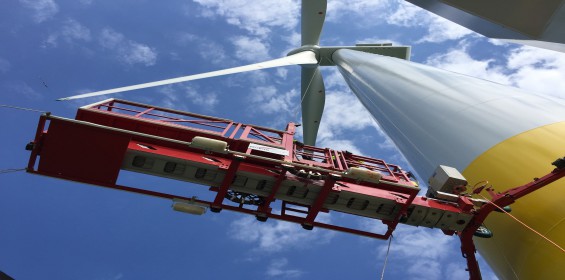The power of offshore windfarms: Is there more we can do?
Published: 27 February, 2020
It has recently been reported that by developing wind turbines on offshore sites, we could provide more than enough clean energy to meet global electricity demand . However, with our energy usage rising exponentially, is there more we can do to maximise the power of offshore windfarms?
According to the International Energy Agency (IEA) , offshore wind generation will grow 15-fold to emerge as a £780bn industry in the next 20 years, igniting a green energy revolution. However, there seems to be an ongoing debate surrounding the proficiency of wind turbines, casting doubt upon this ambitious prediction. For example, a study entitled ‘Wind Power Reassessed: A review of the UK wind resource for electricity generation’ recommends pushing ahead with nuclear power and gas-fired power stations, as it has been suggested that wind farms ‘are a bad way of reducing emissions and a bad way of producing power’ .
Wind farms are subject to degradation in the wake of bad weather, whilst they are believed to ‘reduce the value of housing enormously in nearby areas’ . Fortunately, innovative energy experts are working to passionately support the efficiency of wind turbines, debunking these misconceptions to encourage the materialisation of a more sustainable future across the world. More specifically, the industry is prioritising how wind farms are maintained once they have been constructed.
Offshore wind farms are creating cleaner energy, but as a collective we must do more to support their continued repair and maintenance, including their blades, if we hope to generate a return on this green investment. Rotos 360 is one company built upon the premise of optimising turbine blades, helping to ensure the productivity of wind farms is maximised.
At the forefront of this industry, Rotos 360 uses the latest innovations and solutions to identify and repair damage, excessive wear and other potential issues that can affect the productivity of blades. Their fundamental goal is to reduce the cost of levelised wind energy, whilst minimising downtime and maximising the potential of wind turbines. Bolstered by a team of highly skilled and experienced specialists, they push boundaries to improve blade repair technology, including developing market-leading services in-house.
Sarah Lancaster, Rotos 360’s Business Development Manager, emphasises that this process is not something that can be underestimated, nor can it be met with a ‘off the shelf’ approach. We must remember that every site is unique, bringing bespoke requirements, which is why we must prioritise the in-depth analysis of blade conditions to ensure their optimum performance. For example, Rotos 360 diagnoses different types of damage, gaining information about the performance of a blade to address any possible issues. When it comes to the poignant issue of renewable energy, making assumptions and cutting corners will impair our turbines’ long-term success.
Another concern surrounding offshore wind farms is the notion that because they’re more difficult to access, their repairs aren’t prioritised, subsequently minimising their success. This need not be the case. Rotos 360 uses a variety of access solutions, including rope access techniques, and inspection methods, such as the use of UAV, high-resolution cameras, crawler cameras and internal endoscopes, to service any turbine blade.
Meanwhile, Rotos 360 challenges the difficulty of offshore environments with its UV blade repair techniques. Their cutting-edge RENUVO UV method cures blades 25 times faster than traditional epoxy curing techniques. RENUVO UV is also effective at temperatures as low as 5°C, as high as 30°C and in conditions of up to 90% humidity, meaning wind turbines can be serviced in variable weather conditions. Similarly, Rotos 360’s unprecedented ‘Blade Bubble’ allows teams to carry out high quality blade repairs within a temperature and humidity controlled environment. By forming a compact, enclosed, ‘waterproof’ habitat around the blade, they are able to set the optimum temperature within the blade, ensuring resin can be applied easily and effectively regardless of the weather conditions outside. This expands the time frame within which repairs can be carried out, reducing downtime and associated costs.
Offshore sites are assets that shouldn’t be underestimated simply because their surroundings are more demanding. By investing in technology-driven, innovative solutions, we can fulfil their requirements with ease.
The maintenance of wind turbines is undergoing a shift. For decades, maintenance engineers took a reactive approach to any failures or inefficiencies which may have arisen on offshore sites. However, as an increasing number of experts embrace proactive and revolutionary techniques, a preventative approach appears to be reshaping our notion of wind turbines and their blades.
As wind energy offers a more sustainable alternative, our determination to support turbine developments cannot waver. We must simply prioritise the ongoing performance of turbine blades, for they are fundamentally the cogs that keep the machine working.
[1] https://www.forbes.com/sites/judeclemente/2015/09/23/do-wind-turbines-lower-property-values






